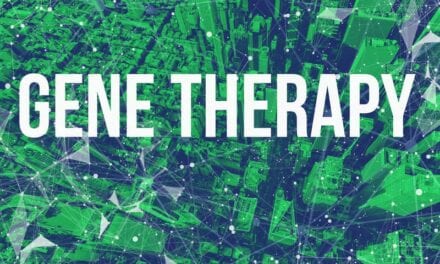
Oren Bar, PT
Personalized medicine is touted as the way of the future, particularly in fields such as oncology, pathology, and laboratory science. Yet in some specialties, personalized medicine is already the way today. Physical therapists, for instance, have always had to tailor programs to a patient’s particular needs and capabilities when dealing with chronic pain, from choice of treatment to specific exercises, to the number of repetitions.
“It’s a lot of trial and error. We will probably hit all of the same things for every pain complaint but in different variations,” says Justin Hata, MD, assistant clinical professor in the departments, of anesthesiology and perioperative care, physical medicine and rehabilitation; chief of the division of pain medicine; medical director at the University of California Irvine Center for Pain Management; and codirector for the UC Irvine Comprehensive Spine Program of UC Irvine Healthcare, Irvine, Calif.
What is new in physical therapy is a holistic approach to the personalization of treatment, a movement embraced by a growing number of therapists who specialize in chronic pain. Rather than simply focus on the site of the pain, some therapists consider the person as a whole. “The big thing about pain is that it is not always felt where the most problematic area is,” says Oren Bar, a PT whose Atlanta-based practice is named RebalANSing Health, LLC.
Chronic pain can be a complex issue for anyone, but particularly for patients 40 years and older who may present with multiple ailments. “If you perform an MRI (magnetic resonance image) on a 70-year-old, they are going to find some degenerated disks, they’re going to find some arthrosis, and they’re going to find some fused joints. It’s just par for the course,” Bar says.

For more information on treating chronic pain, see “Incorporating Modalities into the Rehab Mix,” “Customized Pain Treatment,” and “More Pain, More Gain” from previous issues.
Unfortunately, “these abnormalities may have nothing to do with the patient’s pain,” Bar says. For this reason, an approach that considers the person holistically may more accurately determine the factors influencing the patient’s pain than one focused on the site of the sensation and may, subsequently, have greater success treating the pain.
ISSUE IN THE TISSUE OR ELSEWHERE?
“I’d had very, very little success with the chronic pain population until about 8 years ago when I started reading about the autonomic nervous system,” Bar says. He found its role in pain to be so significant that he built his practice, including the name (RebalANSing Health) and processes, around centralist concepts.
“The paradigm of looking for the ‘issue in the tissue’ falls apart when you look at an amputee who has foot pain [in the missing foot],” Bar says. A paradigm that looks outside the peripheral area of pain to why the brain is transmitting this message can therefore open the field and help more people, Bar notes.
In general, most physical therapists, including Bar, begin patient evaluations with the basics: medical history, current diagnoses, active prescriptions, and relevant physical parameters; some will go into more detail than others. Jeannie Davis, PT, MPH, whose practice is JDD Physical Therapy in West Hills, Calif, completes what she has termed a lifestyle analysis, collecting information about patterns related to sleep, diet, occupation, stress management, and activity. “I find that when people get past middle age, most don’t really move as much and their pain gets worse,” Davis says.

Jeannie Davis, PT, MPH
A physical exam is, of course, also key to a therapist’s evaluation process. Patients are examined for posture, walking, range of motion, muscle strength, tightness, trigger points, and tolerance. Bar also considers symptoms related to the flight-or-flight response of the sympathetic nervous system, including dilated pupils, dry mouth, concentration problems, digestive troubles (constipation, diarrhea), upper body tension, elevated cortisol levels, high blood pressure, and cardiac coherence.
GROWING PAINS REPLACED WITH ACHES AND PAINS
The first exam may reveal an obvious peripheral issue that is easily addressed with a physical solution, or it may indicate a more complex issue that will require a more complex treatment. Things become even more complex in the older patient where there may be multiple issues.
Back pain is a common complaint for both middle-aged and older patients. “I would say back pain is the second most common reason after the common cold that patients see any type of physician,” Hata says. Causes are diverse, ranging from disease (eg, arthritis) to aging (spine degeneration) to improper use (disc bulges). Headaches, neck pain, TMJ (temporomandibular joint disorder), leg pain, and joint pain are also common presentations in older patients.
Just as for back pain, the factors behind any type of chronic pain can be varied. Frequent diagnoses include arthritis (“There are more than 100 kinds of arthritis,” Davis says), osteoporosis (“Which does eventually lead to pain,” Bar says), and fibromyalgia (“The peak incidence is younger, but that doesn’t mean it isn’t seen in older patients,” Davis says).

Justin Hata, MD
When more than one pathology is determined, they must then be prioritized. For instance, Bar says, “When a patient has a hypertonic psoas [muscle], it will affect everything from the ability to stand straight to the ability to walk properly, and the patient may end up with ankle pain. But if I were to look only at the ankle, I would be doing a disservice to the patient.” The patient’s priority is the painful ankle, but Bar’s may be the psoas muscle—the elimination of the pain is the goal of both.
LETTING THE PAIN GO
Naturally, the treatment decided upon is driven by the findings and often multifaceted. At the UC Irvine Pain Management Center, personalized protocols may include medications (prescribed, over-the-counter, or injected); exercise and physical therapy; psychological consultations, which may incorporate biofeedback and/or relaxation techniques; electrical stimulation; and integrative medicine, including acupuncture, herbal remedies, and diet modification—“all the way up to surgery,” Hata says.
The center participates in research to improve these efforts and is currently exploring novel delivery systems for medication; noninvasive methods that deliver modalities, such as modulation of irritated nerves using pulse radiofrequency; and spinal cord stimulation and other methods intended to block transmission of pain signals from the spine. The incorporation of integrative medicine with Western medicine allows the providers to “treat the whole patient,” Hata says.
Bar also seeks to treat the whole patient using focused techniques and continual feedback. For patients dealing with chronic pain, he often starts with biofeedback, showing patients how relaxation improves their cardiac coherence and can impact the pain from the inside. “You can see [the effect] on the screen in real time. It shifts the patient from the sympathetic side toward a balance,” Bar says. He then assigns the relaxation exercise daily for 5 minutes.
He next works on modifying any reflex loops employing one or both of two techniques: the Primal Reflex Release Technique (PRRT) developed by John Iams, MA, PT, president of SuperSpine Inc, Poway, Calif, and the Strain Counterstrain method taught through the Jones Institute of Carlsbad, Calif. “[Chronic pain patients are] constantly in pain so everything they do they might associate with the pain, and it sets up this kind of feedback for the body. I use various manual therapy techniques to shut off local reflexes around the body, where I feel the person has increased muscle tone,” Bar says.
By asking the patient questions and directing attention toward the reduced pain, Bar seeks to interrupt the physical and mental loops. “With that constant feedback, patients break the pattern where they are constantly hunting for what’s making the pain worse and are beginning to pay attention to what is making it better,” Bar says.
Davis also uses manual techniques and tailored treatments to balance the patient’s nervous system and reduce chronic pain in combination with extensive education regarding relevant factors, such as lifestyle and body mechanics. “A lot of people with chronic pain don’t respond to traditional physical therapy. By the time they come to me, they’ve tried every other doctor and physical therapist,” says Davis, who believes her cash-only business and unique approach make her a last resort for many.
Davis is traditionally trained but has also completed coursework in alternative therapies during her 30 years of practice. “What I learned in school wouldn’t work for everybody,” she says. A master’s degree in public health provided her with a view of the patient as a whole being, making her a centralist as well.
When working with a chronic pain patient, Davis often starts with myofascial release and unwinding, craniosacral therapy (CST), and Reiki energy therapies. “These balance the body with the nervous system and release soft tissue so that the patient feels decreased pain,” Davis says. This then allows the patient to perform the exercises and lifestyle changes needed to help manage the pain. Davis prescribes a lot of pool exercises, starting with gentle exercises and moving to aerobic stretching and very mild strengthening for tolerance.
COMING TOGETHER
Progress may be slow or quick and may require the assistance of other health care professionals. Even in private practice, physical therapists may find themselves collaborating with, or simply referring their patients to, other providers, such as specialized physicians (eg, orthopedists), psychotherapists and psychologists, dieticians and nutritionists, occupational therapists, acupuncturists, and even pain anesthesiologists.
Ideally, the team members share a similar approach, for instance centralists versus peripheralists. “It can be a problem because sometimes the patient is telling is one thing and the MRI is telling you something else, and we want to break it down into [causative] components, but pain doesn’t work linearly,” Bar says.
A team that works together can really benefit the patient, particularly in the form of education and psychosocial support. These elements can be especially advantageous for the older patient, who is not necessarily facing a curable disease but the aging process in general.
“[Older patients] have a lot of anxiety and depression anyway, especially when in chronic pain, so we need to be working on the mind as well as the body,” Davis says. She will integrate relaxation and even meditation into the patient’s program as well as referrals to a psychotherapist. The UC Irvine Center for Pain Management has pain psychologists on staff, who include biofeedback, relaxation, and group therapy among their tools.
Although every pain program may cover the same aspects, the specific tools used will vary with both the provider and the patient. “We’re shifting away from these sorts of set-in-stone protocols, but just throwing the whole book at every single back pain problem is not going to work. It’s really about personalizing the treatment plans while trying to target the cause you think is most likely,” Hata says.
Renee Diiulio is a contributing writer for Rehab Management. For more information, contact .




